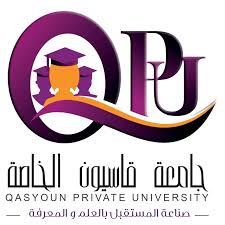اشترك بالحزمة الذهبية واحصل على وصول غير محدود شمرا أكاديميا
تسجيل مستخدم جديدAtom Responding Machine for Dialog Generation
131
0
0.0
(
0
)
اسأل ChatGPT حول البحث

ﻻ يوجد ملخص باللغة العربية
Recently, improving the relevance and diversity of dialogue system has attracted wide attention. For a post x, the corresponding response y is usually diverse in the real-world corpus, while the conventional encoder-decoder model tends to output the high-frequency (safe but trivial) responses and thus is difficult to handle the large number of responding styles. To address these issues, we propose the Atom Responding Machine (ARM), which is based on a proposed encoder-composer-decoder network trained by a teacher-student framework. To enrich the generated responses, ARM introduces a large number of molecule-mechanisms as various responding styles, which are conducted by taking different combinations from a few atom-mechanisms. In other words, even a little of atom-mechanisms can make a mickle of molecule-mechanisms. The experiments demonstrate diversity and quality of the responses generated by ARM. We also present generating process to show underlying interpretability for the result.
قيم البحث
اقرأ أيضاً
Recent works have shown that generative data augmentation, where synthetic samples generated from deep generative models complement the training dataset, benefit NLP tasks. In this work, we extend this approach to the task of dialog state tracking fo
r goal-oriented dialogs. Due to the inherent hierarchical structure of goal-oriented dialogs over utterances and related annotations, the deep generative model must be capable of capturing the coherence among different hierarchies and types of dialog features. We propose the Variational Hierarchical Dialog Autoencoder (VHDA) for modeling the complete aspects of goal-oriented dialogs, including linguistic features and underlying structured annotations, namely speaker information, dialog acts, and goals. The proposed architecture is designed to model each aspect of goal-oriented dialogs using inter-connected latent variables and learns to generate coherent goal-oriented dialogs from the latent spaces. To overcome training issues that arise from training complex variational models, we propose appropriate training strategies. Experiments on various dialog datasets show that our model improves the downstream dialog trackers robustness via generative data augmentation. We also discover additional benefits of our unified approach to modeling goal-oriented dialogs: dialog response generation and user simulation, where our model outperforms previous strong baselines.
Traditionally, industry solutions for building a task-oriented dialog system have relied on helping dialog authors define rule-based dialog managers, represented as dialog flows. While dialog flows are intuitively interpretable and good for simple sc
enarios, they fall short of performance in terms of the flexibility needed to handle complex dialogs. On the other hand, purely machine-learned models can handle complex dialogs, but they are considered to be black boxes and require large amounts of training data. In this demonstration, we showcase Conversation Learner, a machine teaching tool for building dialog managers. It combines the best of both approaches by enabling dialog authors to create a dialog flow using familiar tools, converting the dialog flow into a parametric model (e.g., neural networks), and allowing dialog authors to improve the dialog manager (i.e., the parametric model) over time by leveraging user-system dialog logs as training data through a machine teaching interface.
We propose a simple modification to existing neural machine translation (NMT) models that enables using a single universal model to translate between multiple languages while allowing for language specific parameterization, and that can also be used
for domain adaptation. Our approach requires no changes to the model architecture of a standard NMT system, but instead introduces a new component, the contextual parameter generator (CPG), that generates the parameters of the system (e.g., weights in a neural network). This parameter generator accepts source and target language embeddings as input, and generates the parameters for the encoder and the decoder, respectively. The rest of the model remains unchanged and is shared across all languages. We show how this simple modification enables the system to use monolingual data for training and also perform zero-shot translation. We further show it is able to surpass state-of-the-art performance for both the IWSLT-15 and IWSLT-17 datasets and that the learned language embeddings are able to uncover interesting relationships between languages.
As a crucial component in task-oriented dialog systems, the Natural Language Generation (NLG) module converts a dialog act represented in a semantic form into a response in natural language. The success of traditional template-based or statistical mo
dels typically relies on heavily annotated data, which is infeasible for new domains. Therefore, it is pivotal for an NLG system to generalize well with limited labelled data in real applications. To this end, we present FewShotWoz, the first NLG benchmark to simulate the few-shot learning setting in task-oriented dialog systems. Further, we develop the SC-GPT model. It is pre-trained on a large set of annotated NLG corpus to acquire the controllable generation ability, and fine-tuned with only a few domain-specific labels to adapt to new domains. Experiments on FewShotWoz and the large Multi-Domain-WOZ datasets show that the proposed SC-GPT significantly outperforms existing methods, measured by various automatic metrics and human evaluations.
The design of better automated dialogue evaluation metrics offers the potential of accelerate evaluation research on conversational AI. However, existing trainable dialogue evaluation models are generally restricted to classifiers trained in a purely
supervised manner, which suffer a significant risk from adversarial attacking (e.g., a nonsensical response that enjoys a high classification score). To alleviate this risk, we propose an adversarial training approach to learn a robust model, ATT (Adversarial Turing Test), that discriminates machine-generated responses from human-written replies. In contrast to previous perturbation-based methods, our discriminator is trained by iteratively generating unrestricted and diverse adversarial examples using reinforcement learning. The key benefit of this unrestricted adversarial training approach is allowing the discriminator to improve robustness in an iterative attack-defense game. Our discriminator shows high accuracy on strong attackers including DialoGPT and GPT-3.
الأسئلة المقترحة
سجل دخول لتتمكن من نشر تعليقات
التعليقات
جاري جلب التعليقات


سجل دخول لتتمكن من متابعة معايير البحث التي قمت باختيارها


